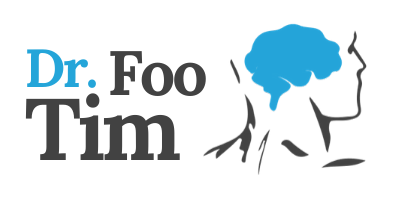Discovering Proteoglycan
One of the key compounds I work with is Proteoglycan. It is a potential game-changer and a very viable natural alternative for individuals with both joint conditions as well as systemic conditions. For proactive individuals, understanding proteoglycan can help you decide if it’s a viable addition to your ‘longevity kit’ with regards to disease prevention and quality of life.
For individuals in pain or with existing conditions, it serves as a conservative approach when paired with exercise, chiropractic, diet and lifestyle changes. A common sense approach would lead to exploring conservative options before embarking on expensive, risky invasive procedures. Some of these procedures are irreversible.
What is proteoglycan?
Proteoglycan is one of the four key components found in your joints as well as in the membrane of every cell in your body. The other compounds found in the cartilage within joints are hyaluronic acid, collegen, and chondroitin sulphate.
Four Main Functions Of Proteoglycan
#1 Anti-Inflammation
Inflammation is a well known cause for many conditions that we struggle with in the body. While it can exist together with other conditions in the body, removing inflammation often allows the body to heal as it was designed to. Let’s examine just one area that inflammation happens – on our skin.
Common skin troubles such as acne, dry skin, and sunburn are examples of how inflammation manifests on our skin.
Proteoglycan is able to suppress the function of inflammatory cytokines and at the same time activate the function of anti-inflammatory cytokines (IL-10) which functions to further suppress inflammation in the body.
This duel effect allows proteoglycan to positively influence inflammatory diseases (like obesity, fatty liver) and autoimmune diseases (like IBS and Crohn’s). It is NOT a weight loss supplement however. A realistic approach would have to include specific diet and lifestyle change in conjunction with targeted supplementation/nutrition for synergistic effects.
A common effect that individuals on proteoglycan experience is a reduction of pigmentation. Research has shown that proteoglycan controls melanin pigment generation which is the culprit for “age” patches on the skin.
#2 Promotion of Cell Proliferation (Skin Regeneration)
Proteoglycan has been found to have the same effect as epidermal growth factor (EFG) found in human skin. EFG is a protein discovered by Nobel prize winning Dr Stanley Cohen that regulates and promotes cell growth.
After 20 years of age, EFG secretion declines. By the time we reach our 40s, it goes down to half or one-third. This leads to cell deterioration which causes skin troubles such as drying, hardening, wrinkles, or moth patches.
Note that regeneration of skin cells is a function that hyaluronic acid and collagen DOES NOT have. Proteoglycan instead promotes the production of collagen and hyaluronic acid.
Hyaluronic acid is easily decomposed but proteoglycan withstands decomposition and does not easily dry out over the passage of time.
On top of that, hyaluronic acid does not get results with ingestion (that is why most hyaluronic acid procedures are administered on the skin surface), but proteoglycan can work BOTH topically and when ingested.
The biggest difference with proteoglycan is it’s ability to promote the production of hyaluronic acid and collagen in human skin.
#3 Promotion of Cartilage Regeneration
Ten million people above 50 years old experience knee osteoarthritis. And almost ALL people by the age of 80 experience this to varying extents.
Proteoglycan, together with collagen and hyaluronic acid, make up the joint cartilage that “cushions” the joint. It’s elastic properties allow it to act like a shock absorber.
As we age, natural joint regeneration is unable to keep up with the wear and tear leading to degeneration. Furthermore, damage to joints breaks up collagen fibres and denatures proteoglycan that exists within the joint.
Proteoglycan’s regenerative properties allow healing of the cartilage while it’s anti-inflammatory properties provide pain relief. Proteoglycan is highly beneficial for joints because it also promotes the regeneration of the cartilage itself. This property is not seen with collagen or hyaluronic acid.
#4 Moisture Retention
Suppleness, moisture and dew are the foundations of beautiful skin. Baby’s skin is 80% water. As we age, this water content decreases 60-70% and continues to dip as we age. Hyaluronic acid and chondroitin sulphate are prized for their moisture retention properties and are widely used in aesthetics and injury treatment for tissue healing. But proteoglycan exceeds this water retention capacity by 30%!
Summary Of The Four Main Functions Of Proteoglycan
Anti-Inflammation
Promotion Of Cell Proliferation (Skin Regeneration)
Promotion Of Cartilage Regeneration
Moisture Retention
Question: What does this mean for you?
If you found this useful have any feedback, feel free to start a conversation with me on facebook or instagram =)
Hope this helps=)
Reach out to me on social media, I would love to get to know you.
Timothy Foo
Doctor of Chiropractic (D.C.)
Healthy Lifestyle Advocate
www.DrTimFoo.com

